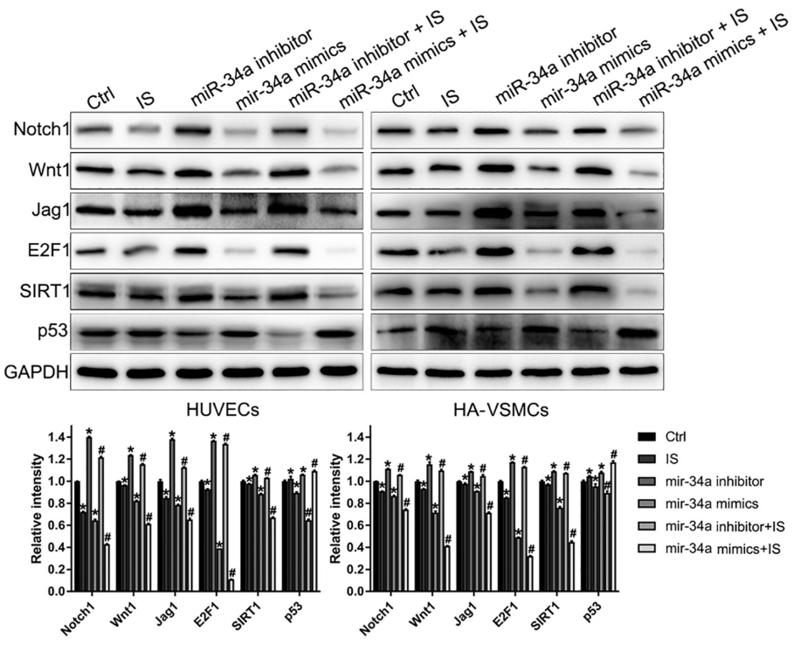JAG1 Antibody - #DF8269
| Product: | JAG1 Antibody |
| Catalog: | DF8269 |
| Description: | Rabbit polyclonal antibody to JAG1 |
| Application: | WB |
| Cited expt.: | WB |
| Reactivity: | Human, Mouse, Rat |
| Prediction: | Pig, Bovine, Horse, Rabbit, Xenopus |
| Mol.Wt.: | 134 kDa; 134kD(Calculated). |
| Uniprot: | P78504 |
| RRID: | AB_2841558 |
Related Downloads
Protocols
Product Info
*The optimal dilutions should be determined by the end user. For optimal experimental results, antibody reuse is not recommended.
*Tips:
WB: For western blot detection of denatured protein samples. IHC: For immunohistochemical detection of paraffin sections (IHC-p) or frozen sections (IHC-f) of tissue samples. IF/ICC: For immunofluorescence detection of cell samples. ELISA(peptide): For ELISA detection of antigenic peptide.
Cite Format: Affinity Biosciences Cat# DF8269, RRID:AB_2841558.
Fold/Unfold
AGS; AHD; AWS; CD 339; CD339; CD339 antigen; Headturner; hJ1; Htu; Jag 1; Jag1; JAG1_HUMAN; Jagged 1; Jagged1 (Alagille syndrome); Jagged1; JAGL1; MGC104644; OTTHUMP00000030278; Protein jagged-1; Ser 1; Ser1; Serrate 1; Slalom;
Immunogens
A synthesized peptide derived from human JAG1, corresponding to a region within N-terminal amino acids.
Widely expressed in adult and fetal tissues. In cervix epithelium expressed in undifferentiated subcolumnar reserve cells and squamous metaplasia. Expression is up-regulated in cervical squamous cell carcinoma. Expressed in bone marrow cell line HS-27a which supports the long-term maintenance of immature progenitor cells.
- P78504 JAG1_HUMAN:
- Protein BLAST With
- NCBI/
- ExPASy/
- Uniprot
MRSPRTRGRSGRPLSLLLALLCALRAKVCGASGQFELEILSMQNVNGELQNGNCCGGARNPGDRKCTRDECDTYFKVCLKEYQSRVTAGGPCSFGSGSTPVIGGNTFNLKASRGNDRNRIVLPFSFAWPRSYTLLVEAWDSSNDTVQPDSIIEKASHSGMINPSRQWQTLKQNTGVAHFEYQIRVTCDDYYYGFGCNKFCRPRDDFFGHYACDQNGNKTCMEGWMGPECNRAICRQGCSPKHGSCKLPGDCRCQYGWQGLYCDKCIPHPGCVHGICNEPWQCLCETNWGGQLCDKDLNYCGTHQPCLNGGTCSNTGPDKYQCSCPEGYSGPNCEIAEHACLSDPCHNRGSCKETSLGFECECSPGWTGPTCSTNIDDCSPNNCSHGGTCQDLVNGFKCVCPPQWTGKTCQLDANECEAKPCVNAKSCKNLIASYYCDCLPGWMGQNCDININDCLGQCQNDASCRDLVNGYRCICPPGYAGDHCERDIDECASNPCLNGGHCQNEINRFQCLCPTGFSGNLCQLDIDYCEPNPCQNGAQCYNRASDYFCKCPEDYEGKNCSHLKDHCRTTPCEVIDSCTVAMASNDTPEGVRYISSNVCGPHGKCKSQSGGKFTCDCNKGFTGTYCHENINDCESNPCRNGGTCIDGVNSYKCICSDGWEGAYCETNINDCSQNPCHNGGTCRDLVNDFYCDCKNGWKGKTCHSRDSQCDEATCNNGGTCYDEGDAFKCMCPGGWEGTTCNIARNSSCLPNPCHNGGTCVVNGESFTCVCKEGWEGPICAQNTNDCSPHPCYNSGTCVDGDNWYRCECAPGFAGPDCRININECQSSPCAFGATCVDEINGYRCVCPPGHSGAKCQEVSGRPCITMGSVIPDGAKWDDDCNTCQCLNGRIACSKVWCGPRPCLLHKGHSECPSGQSCIPILDDQCFVHPCTGVGECRSSSLQPVKTKCTSDSYYQDNCANITFTFNKEMMSPGLTTEHICSELRNLNILKNVSAEYSIYIACEPSPSANNEIHVAISAEDIRDDGNPIKEITDKIIDLVSKRDGNSSLIAAVAEVRVQRRPLKNRTDFLVPLLSSVLTVAWICCLVTAFYWCLRKRRKPGSHTHSASEDNTTNNVREQLNQIKNPIEKHGANTVPIKDYENKNSKMSKIRTHNSEVEEDDMDKHQQKARFAKQPAYTLVDREEKPPNGTPTKHPNWTNKQDNRDLESAQSLNRMEYIV
Predictions
Score>80(red) has high confidence and is suggested to be used for WB detection. *The prediction model is mainly based on the alignment of immunogen sequences, the results are for reference only, not as the basis of quality assurance.
High(score>80) Medium(80>score>50) Low(score<50) No confidence
Research Backgrounds
Ligand for multiple Notch receptors and involved in the mediation of Notch signaling. May be involved in cell-fate decisions during hematopoiesis. Seems to be involved in early and late stages of mammalian cardiovascular development. Inhibits myoblast differentiation (By similarity). Enhances fibroblast growth factor-induced angiogenesis (in vitro).
Membrane>Single-pass type I membrane protein.
Widely expressed in adult and fetal tissues. In cervix epithelium expressed in undifferentiated subcolumnar reserve cells and squamous metaplasia. Expression is up-regulated in cervical squamous cell carcinoma. Expressed in bone marrow cell line HS-27a which supports the long-term maintenance of immature progenitor cells.
The second EGF-like domain is atypical.
Research Fields
· Environmental Information Processing > Signal transduction > Notch signaling pathway. (View pathway)
· Environmental Information Processing > Signal transduction > Apelin signaling pathway. (View pathway)
· Environmental Information Processing > Signal transduction > TNF signaling pathway. (View pathway)
· Human Diseases > Drug resistance: Antineoplastic > Endocrine resistance.
· Human Diseases > Infectious diseases: Viral > Human papillomavirus infection.
· Human Diseases > Cancers: Overview > Pathways in cancer. (View pathway)
· Human Diseases > Cancers: Specific types > Breast cancer. (View pathway)
· Organismal Systems > Immune system > Th1 and Th2 cell differentiation. (View pathway)
References
Application: WB Species: Rat Sample: spinal cord
Application: IF/ICC Species: Rat Sample: spinal cord
Application: WB Species: human Sample: HUVECs and HA-VSMCs
Restrictive clause
Affinity Biosciences tests all products strictly. Citations are provided as a resource for additional applications that have not been validated by Affinity Biosciences. Please choose the appropriate format for each application and consult Materials and Methods sections for additional details about the use of any product in these publications.
For Research Use Only.
Not for use in diagnostic or therapeutic procedures. Not for resale. Not for distribution without written consent. Affinity Biosciences will not be held responsible for patent infringement or other violations that may occur with the use of our products. Affinity Biosciences, Affinity Biosciences Logo and all other trademarks are the property of Affinity Biosciences LTD.



